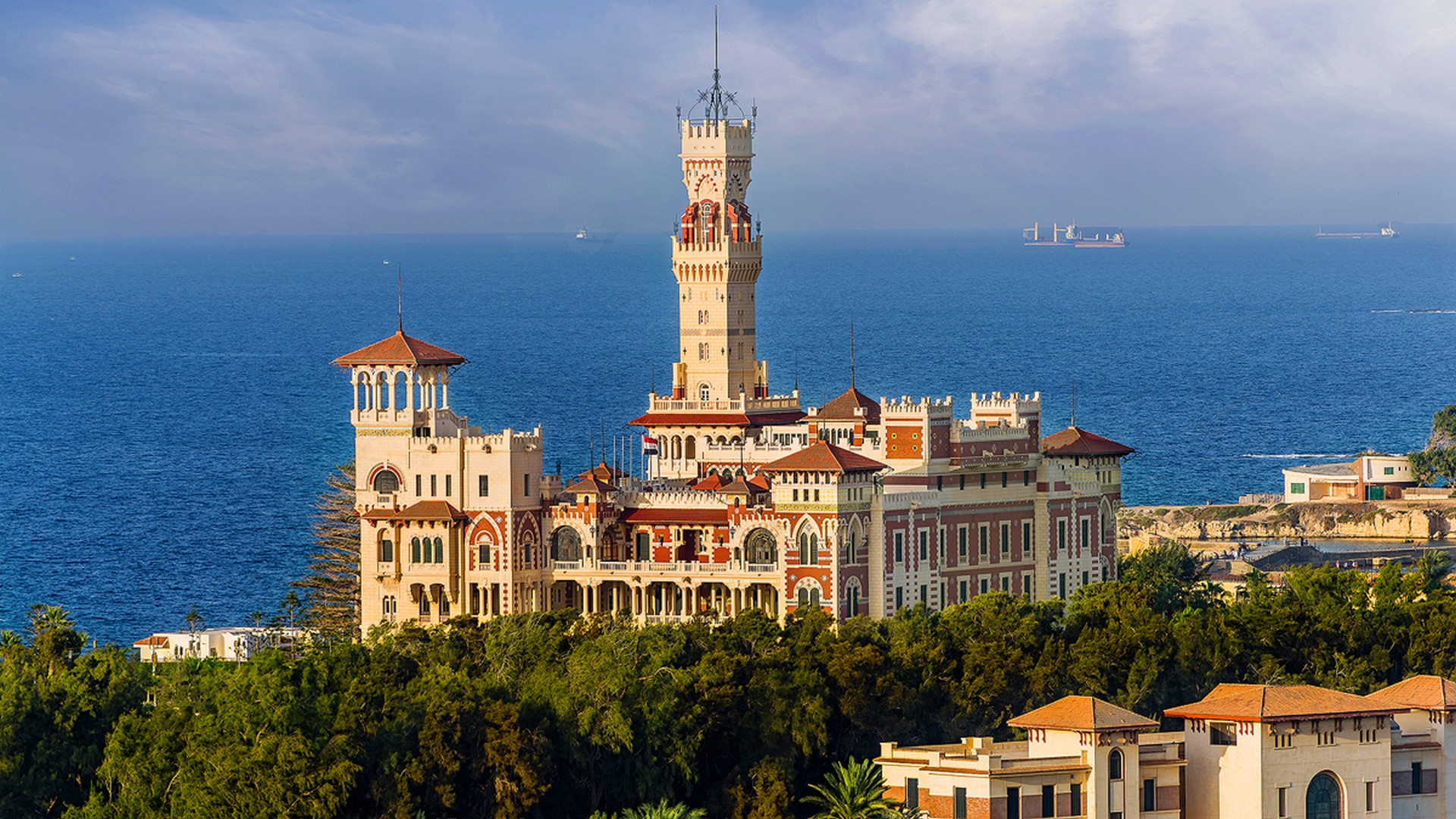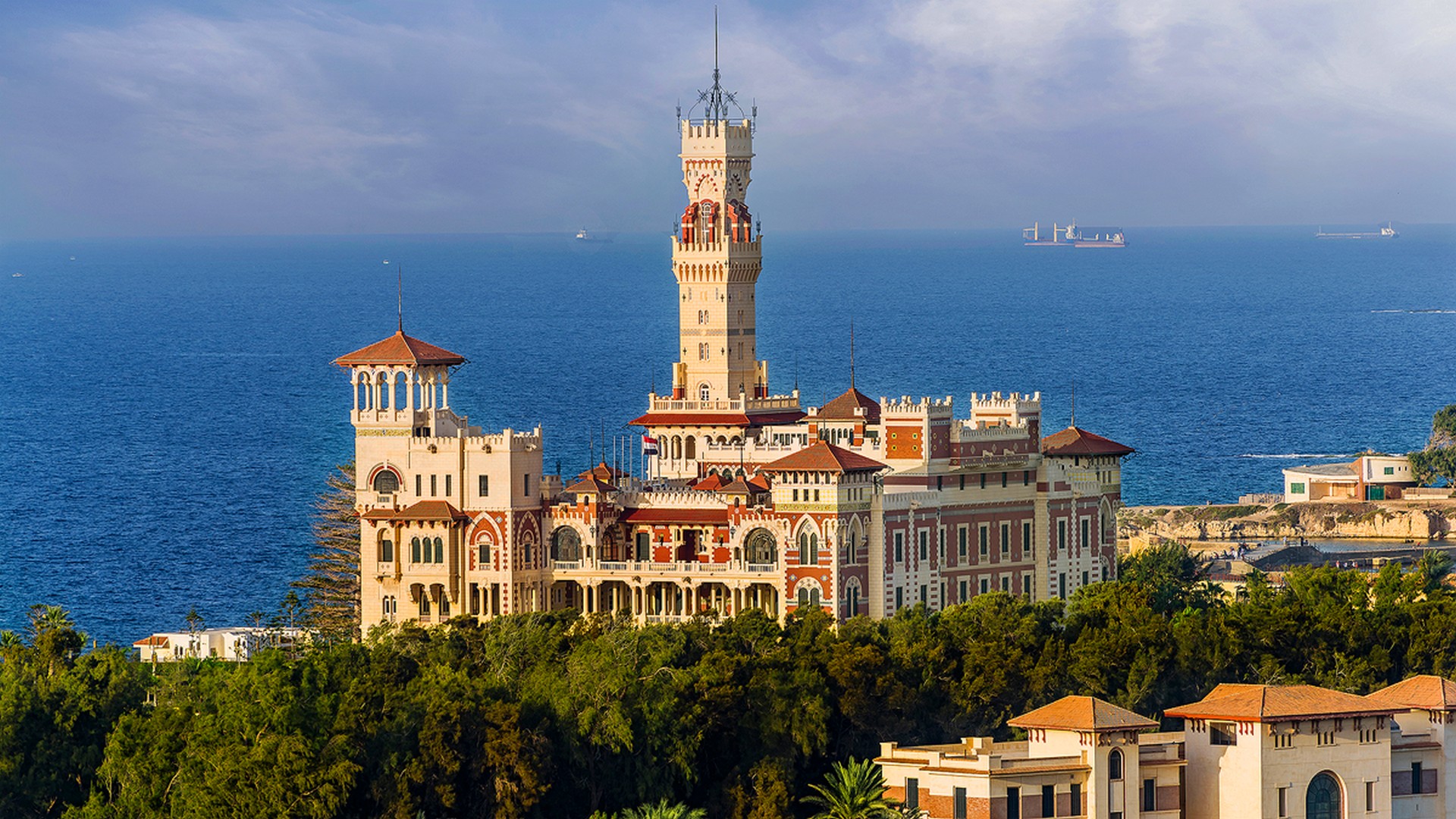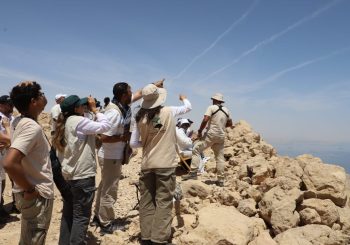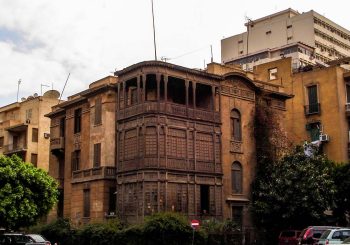
Coasting the sea, the Montaza Palaces rip into the sky; the wind is unshackled, swells of greenery pad the estate, and the 19th century etches itself into the mind’s eye. Peaceful and loosely integrated into the colorful, time-tried Alexandria, island palms lend completion to the coast.
For the modern Egyptian, Al-Montaza is an escape into the past. For decades the area has been a hub of hospitality and summery, foam-tipped beaches. Located on the north coast, just shy of the north-eastern edge of Alexandria, Al-Montaza is a district of varying sites umbrellaed under one identity. From lost, underwater metropolises to Royal Gardens, the district has evolved into the most well-known and well-loved in Alexandria.
Though it all started at the heart, with a vast and impressive royal complex.

The Montaza Complex was first envisioned, and later brought to life, by Khedive Abbas Helmy II, the final Khedive of Egypt and Sudan. Seeing that small, idyllic island enamored him; he coveted a summer residence—removed from the stern, unforgiving politics of Cairo. Romantically, he would dub it a montaza: a serene, elaborate garden. Under the close advisership of Mahmoud Shokry Pasha, the head of the Turkish Divan in Egypt, the Kedieve would realize his plans of the Montaza Complex—a project that featured two palaces for himself and wide-spanning, groomed gardens that would later become an identifying factor of the property.


Spanning over 360 acres (1.4 square kilometers), the complex overlooks five beaches: Aida, Cleopatra, Vanessa, Semiramis, and the private Helnan Palestine Hotel beach. Its two palaces, Al-Salamlek and Al-Haramlik were “seamless mixture[s] of Ottoman and Florentine architecture,” the latter of which has two distinctive towers and a Roman-style tea kiosk perched at the lip of the coast.
Despite the death of Abbas Helmy II, the Crown oversaw continual maintenance and ownership of Al-Montaza, treating it as a summer getaway for members of the royal family. With the Ras al-Tin Palace considered the seasonal center of state, Al-Montaza was a place for relaxation rather than rigor; it was a location of immense natural beauty and was treated as such by those in power.

This, however, would only last until the coup d’état of 1952, which saw the removal of the monarchy by Officer Gamal Abdel Nasser and the Free Officers party. The complex was seized by the new government, its gardens opened to the public, and its buildings transformed into museums. Later, the Salamlek Palace would be filed under the many presidential residences across the country, which serve to host the president and state visitors.

Though regal, the district has come to embody much of the domestic, day-to-day Alexandrian experience. Home to the Abu Qir neighborhood, the locale is famous for its unchallenged quality of seafood, and the ever-intriguing Nelson Island, where sunken cities Thonis-Heracleion and Canopus sit right off its coast.

Additionally, Nelson was once considered the “entry point in the British-French wars.” Though despite its morbidity, the island has become a local picnicking and fishing site, as well as an underwater museum for those looking to experience antiquity.
Very much in postmodern consciousness, Al-Montaza recaptures the 20th century unlike any location on the coast—and will continue to do so for the foreseeable future.






Comments (3)
[…] المنتزة بالإسكندرية: هروب إلى ماضي مصر الملكي […]
[…] المنتزة بالإسكندرية: هروب إلى ماضي مصر الملكي […]